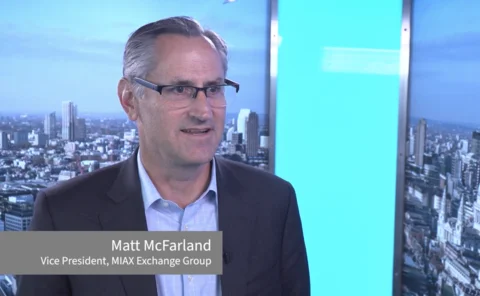Markets
Transitioning away from Libor is the biggest change to financial operations that many firms have ever undertaken. In the coming months, all Libor-based exposures will need to transition to risk-free interest rates such as SOFR or Sonia. While five US dollar Libor fixings will remain in place until June 2023, regulators insist that no new Libor risk should be traded after the end of 2021. The implications for products with floating rates beyond the Libor phase-out are huge. Risk.net is one of the most visited sites for up-to-the-minute information and analysis on the Libor transition.
This section features predominantly third-party content. Read more about our policy on this content here.
Managing inflation risk with hedging strategies
Dmitry Pugachevsky, director of research at Quantifi, explores how banks manage inflation risk using inflation swaps and inflation-linked bonds as hedging instruments
Banks in crisis
The peak of the global financial crisis arrived in 2008 with the collapse of Bear Stearns and Lehman Brothers, and a raft of bailouts. However, it had already been rumbling on for a year at that point, blowing holes in bank funding models and capital…
Stemming the tide of rising FX settlement risk
As the trading of emerging markets currencies gathers pace and broader uncertainty sweeps across financial markets, CLS is exploring alternative services designed to mitigate settlement risk for the FX market
Pricing in volatile markets and potential regulatory impact
A combination of volatile and turbulent prices, challenges for valuation and the introduction of the US Securities and Exchange Commission (SEC) Rule 2a-5 means data specialists are more essential than ever for investment firms
JSCC and the future of clearing and settling yen-denominated trades
The Japanese Securities Clearing Corporation (JSCC) explores how market participants can benefit from a wide array of yen products while accessing robust risk and margin management frameworks with a high level of transparency
Smarter data: steering a course in volatile markets
Fixed income markets are entering a new era of turbulence. This paper outlines the challenges facing asset managers in this macro environment and how to overcome them through high-quality data and cutting-edge analytical tools that uncover alpha and…
FX Smart Clearing at LCH ForexClear: solving SA-CCR capital challenges
LCH ForexClear explores how, with the standardised approach to counterparty credit risk increasing the capital requirements of banks’ FX portfolios, its FX Smart Clearing solution can reduce capital burden and achieve additional savings for members
Repo clearing: trends, developments and outlook
Recent volatility in the UK gilt market has highlighted the repo market’s need for CCP stability, predictability and resilience. LCH RepoClear unpacks the trends and key developments of 2022, and shares an outlook for 2023
Optimising balance sheet management in today’s market conditions
Financial institutions are going to continue struggling with challenges and volatility in 2023
The evolving use of swaps by pension schemes
The end of the Emir mandatory swaps clearing exemption for pension scheme arrangements (PSAs) is approaching. Susi de Verdelon, global head of LCH SwapClear, discusses the significance of the upcoming change for PSAs, and the implications for their…
Marginal gains: buy side gets set for cross-product margining
Faced with higher margin and funding costs, more buy-side firms are looking to optimise margin requirements across their fixed income portfolios. Here Lee Bartholomew, global head of FIC product design at Eurex, and Per Haga, global head of prime…
Offshore renminbi: breaking new ground for a new era of safe settlement
With offshore renminbi (CNH) now one of the world’s five most traded currencies, Alex Knight, global head of Emea at Baton Systems, explains the importance of extending the ease and speed of riskless, payment-versus-payment (PvP) settlement access across…
Next Generation ETD: a future-proof concept
In June, the infrastructure for Eurex’s next generation of exchange-traded derivatives (ETD) contracts went live. The concept meets changing market demand and is implemented across Eurex’s entire value chain, allowing more flexibility in the design of…
XVAs and counterparty credit risk for an energy market in crisis
Europe’s current energy crisis, coming on the heels of global market volatility caused by the Covid-19 pandemic, has introduced additional complexities to valuation adjustments and counterparty credit risk modelling. Additionally, underdeveloped forward…
US dollar Libor transition: the role of CCPs in conversion
As the transition from Libor to alternative risk-free rates approaches a new milestone, Philip Whitehurst, head of service development, rates at LCH SwapClear, discusses the central counterparty's (CCP's) plans for US dollar Libor conversion, the…
Critical divergence in prices between Spikes and Vix after the Fed’s rate hike
In these uncertain times, when rates hikes and other structural drivers are giving rise to adverse market moves, reliable indicators of 30-day implied volatility are crucial
Equities clearing and CCP resilience: protecting post-trade from geopolitical turmoil
Headline-making events in 2022 have driven market volatility with sustained increases in trading and clearing volumes. With market participants under pressure, how do central counterparty (CCP) resilience and innovation in equities clearing provide…
Addressing SA-CCR capital challenges with FX clearing
Since the implementation of the standardised approach to counterparty credit risk (SA-CCR) in June 2021, the foreign exchange industry has struggled to cope with the sharp increases in capital requirements for FX products. James Shanahan, director,…
Tapping into liquidity in the high-yield bond market
How can investors access the potential for greater returns from the high-yield bond market while keeping liquidity risk in check?
Lag in the SOFR-linked non-linear derivatives market: three barriers to transition
Risk.net explores three themes in SOFR non-linear derivatives discussed by experts in a webinar sponsored by Numerix
Risk modelling: Covid’s impact on US housing and mortgages
The Covid-19 pandemic has reshaped consumer behaviour to an extent surpassing the impact of the global financial crisis that began in 2007–08. This fact, combined with drastic policy changes by the US federal government, has effects on financial markets…
The private markets dilemma faced by asset owners
Demand for private markets has seen continued growth. Shar Kassam, vice-president at Nasdaq, and head of Nasdaq Asset Owner Solutions, explores why market volatility has led to additional considerations for portfolio construction, cashflow and liquidity…
Turbulent markets put focus on evaluated pricing
Jayme Fagas, global head of valuations and transparency services at Refinitiv, explores why, in such an environment, firms need to have the right evaluated pricing to ensure they are pricing their portfolios at fair value levels and complying with…
Initial margin – Special report 2022
This Risk.net special report comprises a series of articles that explore the latest developments and key issues emerging in phases five and six, and charts the changing strategies for firms in meeting their initial margin (IM) responsibilities























